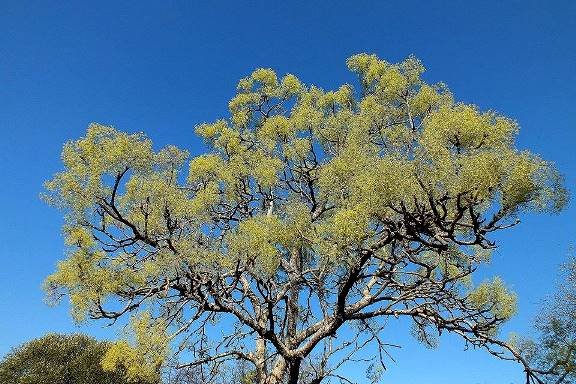Steganotaenia araliacea var. araliacea, the carrot tree

Author: Ivan Lätti
Photographer: Piet Grobler
In full bloom the carrot tree can be spectacular around springtime before the leaves appear. Scientifically called Steganotaenia araliacea var. araliacea, it is a small, deciduous tree of granite and dolerite outcrops, also in the Kruger National Park. The trunk may reach a diameter of 25 cm. This is the only South African species of the genus, as well as the only variety occurring here.
All plant parts, particularly the leaves when crushed, smell strongly of carrots. This brought about the common name of carrot tree. Children strip bark off pieces of stem to make popguns, resulting in another common name of popgun tree.
Parts of the tree feature in traditional asthma remedies and the treatment of sore throats. Don’t feed the leaves to your goats; there is a belief that the tree causes abortion in them. Straight branches of this tree are used to light “sacred fires” by traditional populations in the north of Namibia.
The wood is soft, pale brown with pale heartwood and brittle, not thought of highly in timber terms. The tree grows easily from seed. It is drought-tolerant, but frost-sensitive.
Elephants eat the leaves and bark (Mannheimer and Curtis, (Eds.), 2009; Coates Palgrave, 2002; Schmidt, et al, 2002).

